1992年北縣美展
- “Environment and Art” Series
In 1992, “Taipei County Artists Group Exhibition” called for submissions under the theme of “environment and art,” evoking issues of environmental degradation, combining the natural environment and culture of Taipei County (now New Taipei City), and local awareness with mixed media works.
The “Environment and Art” Series includes 7 exhibitions: “Group Exhibition of Contemporary Art: 16 Ways to Handle Garbage,” “Wind in Quadrant: Taiwan Environment Art Exhibition,” “Group Exhibition of Contemporary Art: Meditations on Humanity, A Diagnosis of Taiwan’s Five Senses,” “Yeh Chu-sheng Solo Exhibition—New Relationships Between Humanity and Nature,” “Taipei County Artists Group Exhibition,” “Lu Tien-yen (now Lu I-chung) Solo Exhibition—Return to Nature,” “Chen Kai-Huang and Huang Wen-Hao Duo Solo Exhibition.”
“Group Exhibition of Contemporary Art: 16 Ways to Handle Garbage”
In July of 1992, with “garbage” as the proposition of the exhibition, 16 participating artists including Tsong Pu, Yeh Chu-sheng, Lu Ming-te, Chen Kai-Huang, Chen Hui-Chiao, Tang Huang-Chen, and Huang Wen-Hao and others used 16 works of art to express 16 ways of exploring garbage and the environment.
“Wind in Quadrant: Taiwan Environment Art Exhibition”
In August of 1992, participating artists used their work to probe, sample and explore Taiwan society, nature and humanities.
“Group Exhibition of Contemporary Art: Meditations on Humanity, A Diagnosis of Taiwan’s Five Senses”
From September to October of 1992, underlined as a “non-exhibition” with considerable text and diagrams, paintings displayed side by side, the exhibition tried to ruminate on Taiwan’s history and the void of individual history through reflections on the social environment.
“Yeh Chu-sheng Solo Exhibition—New Relationships Between Humanity and Nature”
In November of 1992, Yeh exhibited the “Order and Non-order” series, symbolizing the boundlessness of matter in the universe with order and non-order, under the composition of various materials and thick paint, abstraction was presented in multi-layered textures, reflecting the artist’s dialectic and study on the environment and civilization.
Lu Tien-yen (now Lu I-chung) Solo Exhibition—Return to Nature
In late November of 1992, Lu’s autobiographical work combined imagery and documents. The artist examined self-history and development through painting and story telling, emphasizing respect for our inherent natures and a new relationship with multiplicity.
“Chen Kai-Huang and Huang Wen-Hao Duo Solo Exhibition”
Huang Wen-Hao would exhibit the installation Breath, expressing inner anxiety and chaos with rhythm produced by an object, while Chen Kai-Huang would release the performance What else do we have about art?, conveying his thinking of the environment and space, to form a critical awareness of society.
- The 1st “Ghost Festival Zhongyuan Pudu: Religious Arts Festival”
In 1992, the Taipei County Cultural Center held the first edition of the “Hungry Ghost Zhongyuan Pudu Festival: Religious Arts Festival,” organized and planned by Chen Wen-Chien and Girl’s Shrine Folk Culture Studio. Its location is set in the riverside town of Tamsui River, with the main venue in Xinzhang Dizang Temple in Xinzhuang and Zhongxiao Bridge in Sanchong. An extensive field survey was conducted before the event, continuing traditions of releasing water lanterns and religious processions of Zhongyuan Pudu—pudu, as in to transmute and absolve the suffering of the deceased through rituals—while also conducting water lantern study camps before release, inviting under-resourced groups, including underage prostitutes, orphans, people with disabilities, to participate in production, and dance and theater performances that county citizens could freely participate in.
With various activities, the meaning of a religious art festival was anchored in its first edition: this was a cross-disciplinary festival involving artists, social workers, and temples. Originating from ritual and offering, under diversified activities and performances, “Pudu” was expanded in interpretation as an expansive art event with the affirmation of social movements, enabling religion to shift beyond the scope and significance of folk activities by integrating with contemporary art.



